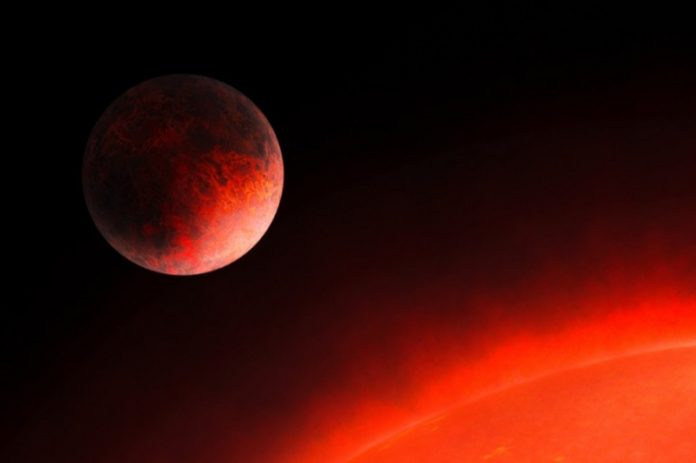
The exoplanet GJ 367b orbits its star in an extremely short time.
Only 8 hours, then a year has passed on this planet.
We don’t know anything like this from our solar system: Mercury is the fastest planet here with an orbital period of 88 days, compared to GJ 367b it is a lame snail.
GJ 367b is a rocky planet that is much denser than Earth and similar in structure to Mercury.
It probably has a large iron core.
Roughly 9 parsecs, or 30 light-years, from Earth, a sub-Earth planet with a density close to pure iron orbits its red dwarf star host in less than 24 hours, researchers report.
The small and hot terrestrial world – designated GJ 367b – belongs to a class of exoplanets known as ultrashort-period (USP) planets.
Due to their small sizes and masses, sub-Earth exoplanets – planetary bodies less massive than Earth and Venus – are among the most challenging to detect.
It’s also unclear how they can form on USP orbits. Measuring the masses and sizes of these planets determines their density, which can indicate their interior composition and help to understand their formation and evolutionary processes.
However, no sub-Earth USP planets have previously been observed with the necessary precision. Here, Kristine Lam, Szilárd Csizmadia and colleagues report the discovery and characterization of GJ 367b, using high-precision photometry from the TESS (Transiting Exoplanet Survey Satellite) spacecraft and radial velocity observations from the HARPS (High Accuracy Radial Velocity Planet Searcher) spectrograph.
According to the authors, GJ 367b is roughly three-quarters the size of Earth and about half as massive.
It orbits a nearby red (M-type) dwarf star every 7.7 hours, has a density equivalent to almost pure iron, and a surface temperature close to the melting point of iron, suggesting it is the iron core of a planet that has lost its outer mantle.
Using an interior structure model, the authors predict that the planet is dominated by a large iron-rich core, similar to the interior structure of Mercury.
It’s unclear how such an iron-rich planet formed.



